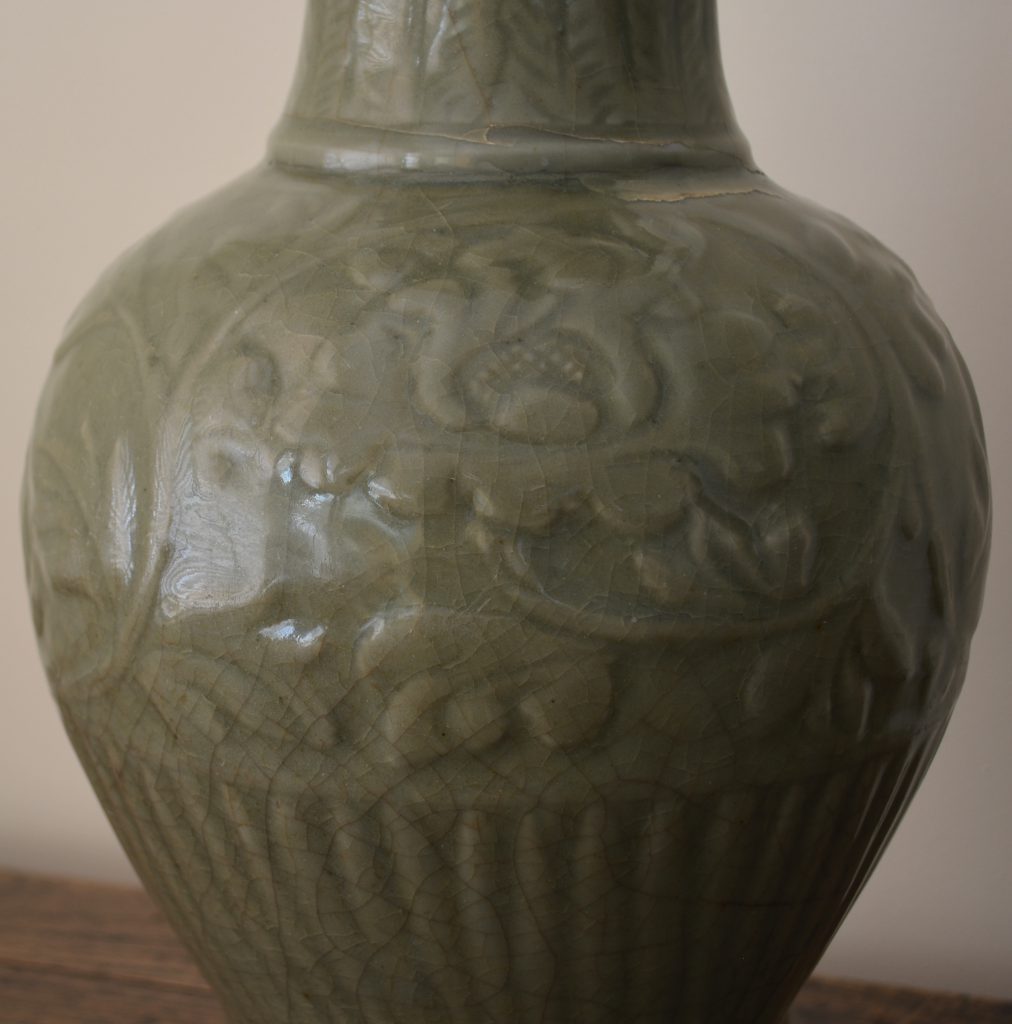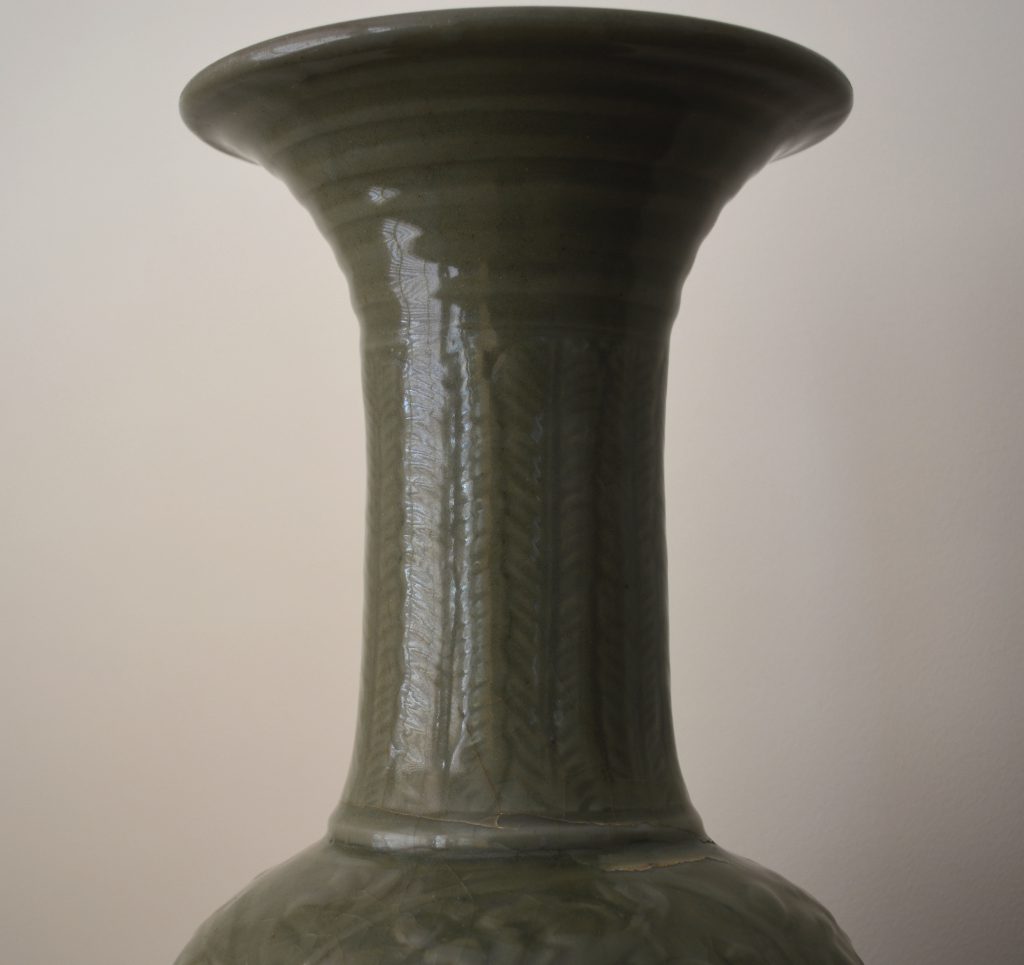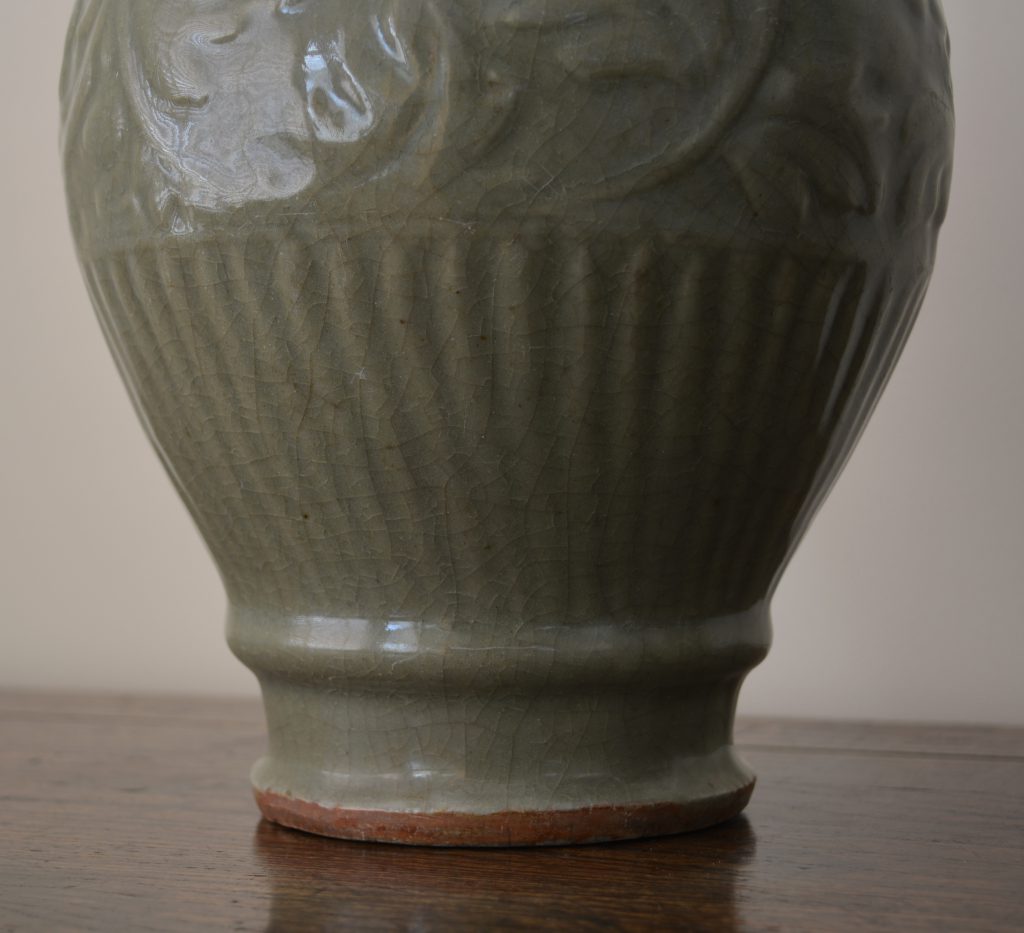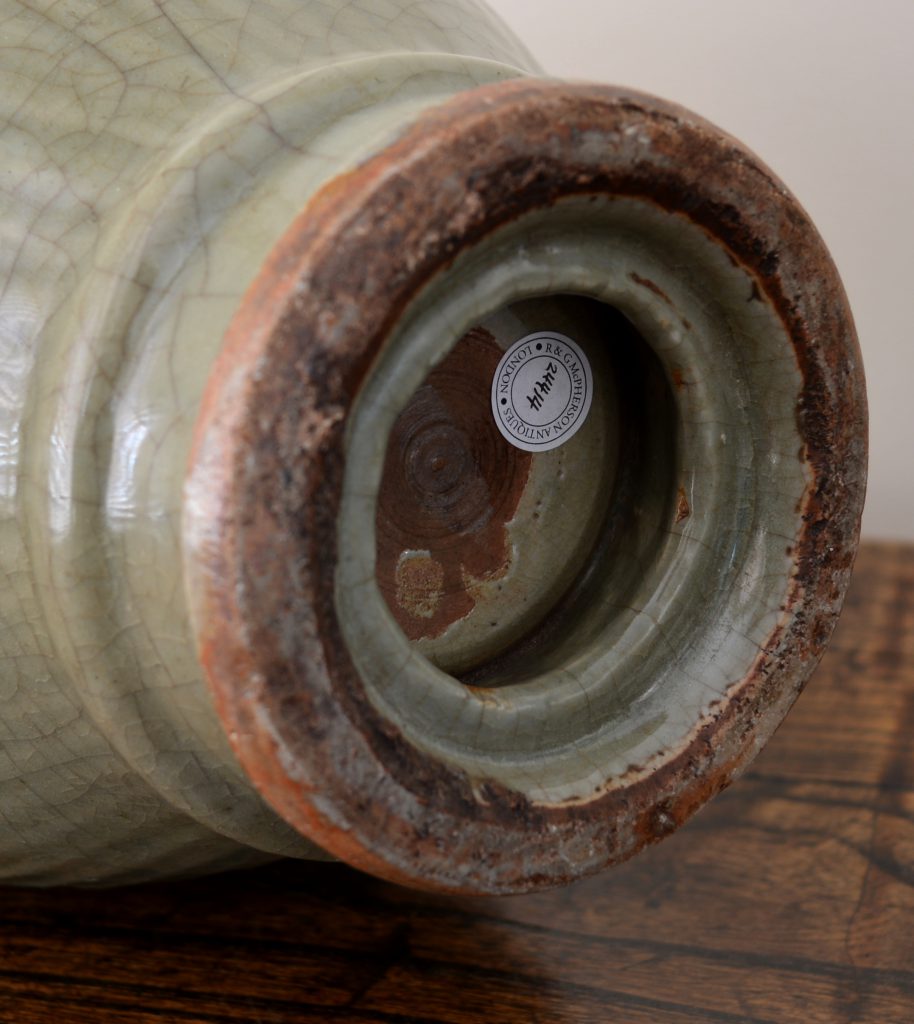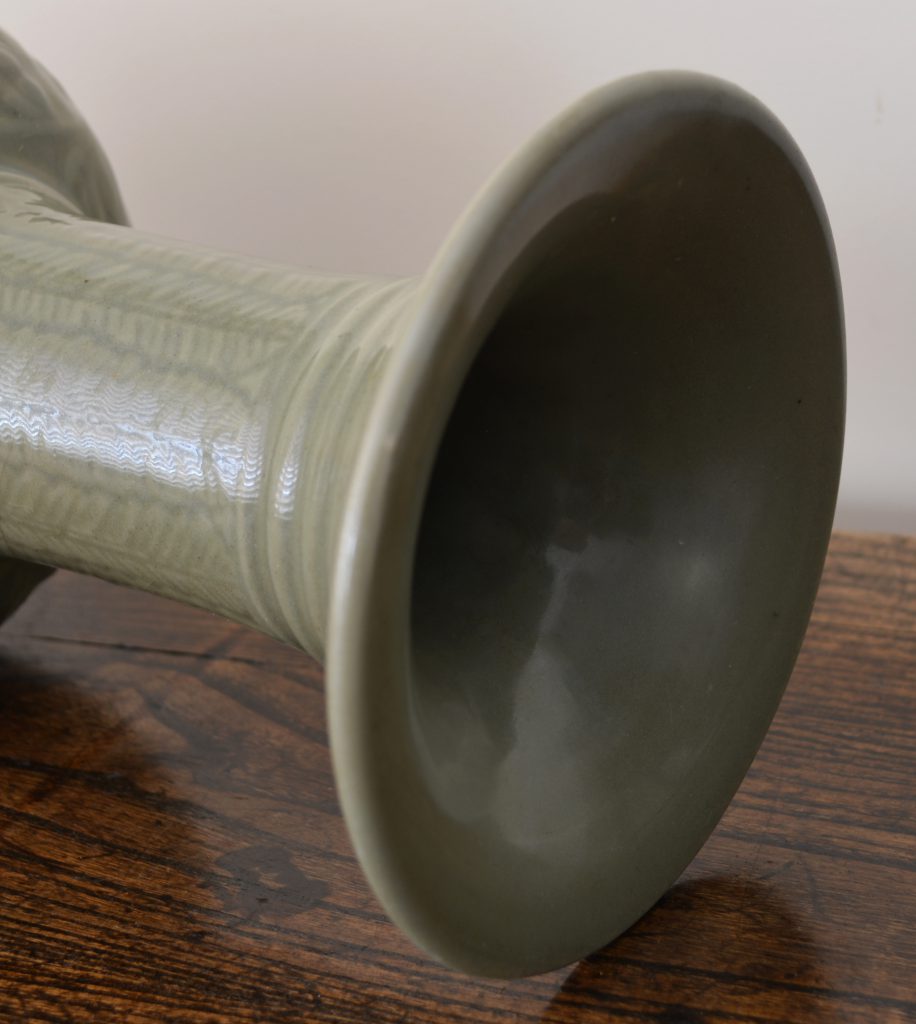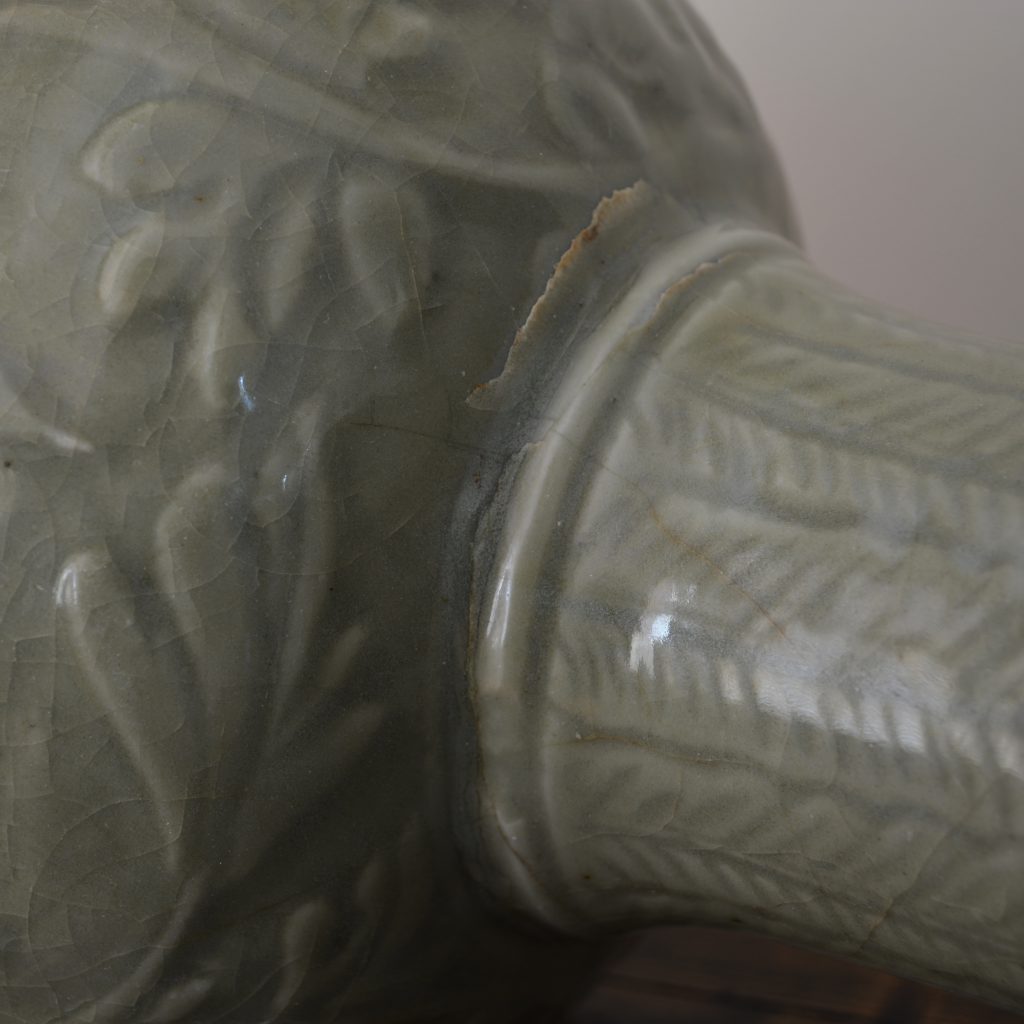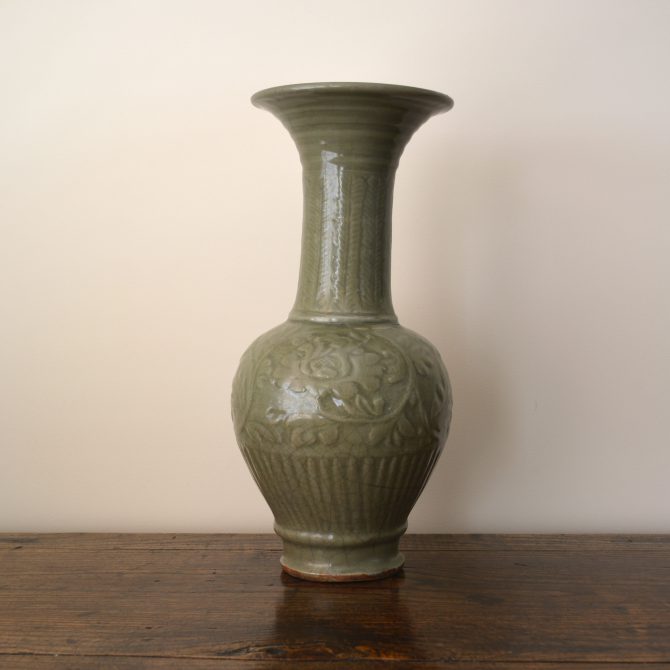
MING DYNASTY, YONGLE to TIANSHUN 1403 – 1464 Longquan Celadon Ware
A Large Early Ming Dynasty Longquan Celadon Ware `Temple` Vase, Longquan Kilns, Zhejiang Province, 15th Century. This Substantial Vase is Carved with Scrolling Lotus and Stiff Leaves.
SOLD
- Condition
- There is a crack which appears to be fractured in on area, this can be seen where the neck joins the body. There are some dark glaze lines and some crazing. The general impression is much better than the photographs might imply.
- Size
- Height : 43 cm (17 inches)
- Provenance
- N/A
- Stock number
- 24414
- References
- For a similar Ming Celadon vase dated by inscription to 1454 is in the British Museum, Part of the Percival David Foundation, reference PDF.238. For another 15th century Ming vase of this type (in poor condition) see our `Sold Items` number 21330.
Information
Celadon Ware :
Celadon is a term used to describe several types of Chinese stoneware and porcelain, as well a ceramics from other countries, notably from Korea and Japan. The term is a imprecise one, applying to various types of green glazed ceramics, but not all ceramics with green glazes, there are several wares that have a green glaze that are not refereed to as celadon. For example Green Jun and Ge Ware. For this reason there has been a move to try to clarify the situation by using the term `Green Ware`. But for now Celadon is a more familiar and therefore useful term. The origins of the term Celadon are not clear, one theory is that the term first appeared in France in the 17th century and that it is named after the shepherd Celadon in Honoré d`Urfé`s French pastoral romance, L`Astrée (1627), who wore pale green ribbons. (D`Urfe, in turn, borrowed his character from Ovid`s Metamorphoses.) Another theory is that the term is a corruption of the name of Saladin, the Ayyubid Sultan, who in 1171 sent forty pieces of the ceramic to Nur ad-Din, Sultan of Syria. Yet a third theory is that the word derives from the Sanskrit sila and dhara, which mean "stone" and "green" respectively. Celadon ware originated in Zhejiang Province in the Eastern Han Dynasty, however green monochrome glazes can be found on stoneware much before that date. Zhejiang is were the famous Longquan Celadons were made but Celadon wares were also produced at Jiangsu, Hubei, Hunan and Jiangxi. The production of Celadon Ware required a reducing atmosphere of around 1300 degrees C., the colouring agent was a mixture of iron oxide and titanium. The glaze was applied very thickly, and was full of tiny bubbles which defuse the light giving the appearance of richness and softness.
Temple Vases :
The phrase `temple vases` denotes pairs of vases in either ceramic or bronze made expressly for use in a temple. They would be donated to a temple, sometimes with other objects such as a censer and candle sticks, to make up an `alter garniture`. Many alter vases carry dedicatory inscriptions stating the name of the donor, often with the name of the temple for which they were made, sometimes with the date and the address of the temple. Pious blessing could also be included, humbly wishing for health and prosperity. The inscriptions with dates are very useful as they were normally added at the time of manufacture or very shortly after. The most important `Temple Vases` are the famous, so-called `David Vases`. These magnificent Blue and White vases which are now at the British Museum were made with a censer (now lost). We know this because the full inscription tells us so, it also gives the name of the society, the Jingtan society which dedicated the vases, but most importantly it gives a date : Recorded on an auspicious day in the fourth month of the eleventh year of Zhizheng (1351). This date is essential to our understanding of Yuan (1279-1368) Blue and White Porcelain as the `David Vases` have numerous freezes which can be found on a large range of high quality Yuan Blue and White Porcelain, from dishes in the Topkapi Palace in Istanbul to shards of Yuan Blue and White recovered from shipwrecks.
